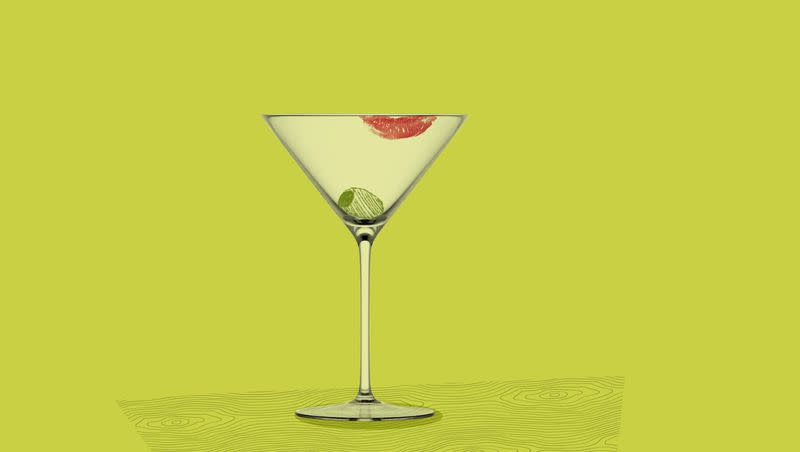Gen Z and millennials are drinking less alcohol, while Gen X just hit a record high

Drinking rates among young adults in the United States have gradually decreased over the past two decades. During the past 20 years, the percent of U.S. adults who drink has dropped 10 percentage points, falling from 72% to 62%, according to a new study from Gallup.
Younger adults who do drink are drinking less regularly. Individuals between 18-35 who claim they “ever drink,” that they “drank in the past week” or “sometimes drink more than they should” are all lower today, according to Gallup.
Consuming an alcoholic beverage at least once per week indicates a regular drinker. Between 2001-2003, 67% of younger adults reported they have at least one drink per week, but that rate has dropped to 61% today, the study revealed.
Overdrinking, or binge drinking, is also less common among young adults in the U.S. Young drinkers who report they sometimes drink “more than they think they should” has dropped from 28% in the 2000s or 2010s to 22% today.
The study notes one reason for the decline in alcohol consumption among younger adults comes from a rising concern that even moderate drinking is bad for health — 52% of younger individuals currently hold this view, up from 34% five years ago.
Alcohol and marijuana use is up among middle-aged US adults, study finds
While drinking rates among younger adults decrease, alcohol use, vaping, marijuana use and hallucinogen consumption among middle-aged U.S. adults (35-50) is at an all-time high, according to new research from the University of Michigan’s Monitoring the Future panel.
Nearly 30% of middle-aged adults reported having five or more consecutive alcoholic beverages during the past two weeks — a record high, according to the study.
There is also a rise in middle-aged U.S. adults using substances such as marijuana and hallucinogens. Marijuana use among middle-aged adults has more than doubled in the past decade as 28% report having used the drug. And 4% of adults 35 to 50 years report using hallucinogens in the past year, which include drugs such as LSD, MDMA, mescaline, peyote, mushrooms or psilocybin and PCP. These rates are significantly higher than a decade ago, the research notes.
“The value of surveys such as MTF is to show us how drug use trends evolve over decades and across development, from adolescence through adulthood,” Megan Patrick, research professor and principal investigator of the MTF panel study, said in a news release, per USA Today. “Behaviors and public perception of drug use can shift rapidly, based on drug availability and other factors.”
Related
Younger adults are sober curious. What does that mean?
Sober curious individuals take a closer look at their relationship with alcohol. The goal of the sober curious movement is for people to create a relationship with alcohol that works for them — whether that means abstinence, moderation or taking brief periods away from alcohol.
Recently, sober curiosity has become somewhat trendy among young Americans. The health trend has been ignited in part by popular young celebrities like Tom Holland and supermodel Bella Hadid, who are outspoken about their struggles with addiction and speaking candidly about their sober journeys.
In July, Holland revealed that he has been sober for over a year. The actor said he hopped on the wave of sober curiosity for the benefit of his mental health.
“I was definitely addicted to alcohol, not shying away from that at all,” the actor revealed on the July 10 episode of “On Purpose with Jay Shetty.”
“It just really scared me,” he admitted.
After six months sober, Holland felt his health take a positive turn. “I could sleep better. I could handle problems better, things that would go wrong on set, that would normally set me off, I could take in my stride. I had so much better mental clarity. I felt healthier, I felt fitter.”
Hadid began cutting out alcohol in 2021. She celebrated five months of sobriety in March in an Instagram post, and she does not see herself going back.
“I don’t feel the need because I know how it will affect me at 3 in the morning when I wake up with horrible anxiety thinking about that one thing I said five years ago when I graduated high school,” Hadid told InStyle. “There’s just this never-ending effect of, essentially, you know, pain and stress over those few drinks that didn’t really do much, you know?”
Related
In several cases, joining the sober curious movement has nothing to do with a clinical addiction to alcohol but is rather a decision based on personal reasons, like physical or mental health, according to GoodRx Health.
“(Being sober curious) means, literally, to choose to question, or get curious about, every impulse, invitation and expectation to drink, versus mindlessly going along with the dominant drinking culture,” said Ruby Warrington, author of “Sober Curious” and founder of Club Söda, per Verywellmind.
Some of the goals of being sober curious include: increased awareness of your drinking habits, being social without drinking, participating in sober activities (such as an art class or book club) and thinking about your decision to drink before partaking.

